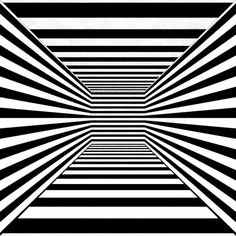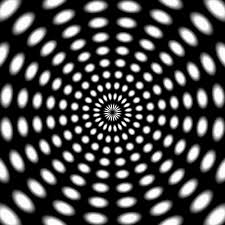|
LITR 4368 Literature of the Future |
Sample answers
for Essay 1:
|
 |
Neil
LeBoy
December 2nd 2017
Copyrights to the Future
I’m starting to think Sky-Net might be real. Every day new technologies
emerge, and people still crave the future. At the same time the news tells us
the world is going to end on a daily basis. It almost seems future literature
has trouble breaking from the apocalypse / creation timeline demonstrated by
Genesis and
Revelations, which focuses on
futures, or pasts, within a few thousand years of today’s world. Was I the only
person in class that absolutely loved Wells’s vision of the deep, deep, future
of Earth inhabited by giant crab like creatures? No humans fighting or crumbling
societies ruined by people’s misuse of technology. I was excited to read stories
about future technologies, utopias, and even the possibility of alien contact.
Sadly, the high-tech societies found in future stories often closely resembled
our own, and not the good parts. The high-tech societies imagined often lead to
a strong digression in society including the loss of uniqueness and ideas of
suicide. This paper will show how high-tech societies in the future often lead
to a dystopian society, despite people’s want for a technologically advanced
future.
The future is a product of a technological past. Gibson’s demonstration
of an alternative future and virtual allusions in “The Gernsback Continuum” are
extremely impressive for ideas in 1986. The story mixes an assortment of past
society and future ideals including allusions to one of the first future visions
on film, Metropolis, and apocalyptic
terms such as the Nazi movement, and Nuclear Explosions, all combined with
futuristic ideas including, buying aliens, ray guns, and “Art Deco futuroids”
(Course Web 59). Especially enjoyable is the scene where the main character
grabs a newspaper and “submerged myself in hard evidence of the human
near-dystopia we live in. “But it could be worse, huh?” (Web 67). The imagery
seems remarkably similar to today’s society; faces everywhere buried deep in
their smart phones waiting for new information or news. Despite people in the
society possessing future technologies they still seem stuck in the past, and
focus on the apocalyptic narrative resembled in
Revelations.
A society filled with advanced
technologies, and still, “What the public wanted was the future” (Web 12).
The public wants the future according to Gibson, and they will get it.
Have you ever seen a video game that looks like it’s using real people? Soon we
might have the ability to mentally enter those virtual worlds. Almost half of
the model assignments including Abel Hernandez and Taylor Fraze refer to the
story, The Onion and I by Thomas Fox
Averill. The story outlines the advantages and disadvantages between a high-tech
and low-tech future. Taylor outlines the high-tech characteristics of the story
including a virtual marriage, and there relation to other future scenarios likes
The Matrix. Alex explains how the
story demonstrates the virtual world as non-comparable to the natural world. It
does seem strange to think a computer could properly capture the taste of fresh
honey, or the smell of a rose. This aligns well with the public’s wanting of the
future in “The Gernsback Continuum”. Use the technology present to today’s
society to create a future people desire. While some people may find the natural
world more enjoyable including the father in
Onion, whom can’t break from the
onion he considers real. (Averill
14), Those without real world experience can create a virtual utopia for
themselves. What makes a virtual world virtual if it’s the only world you’ve
ever known? These aspects of a high-tech society are appealing to society by
providing a short-term technological answer to utopia.
Future visions that show a
digression from today’s world due to technology are also evident in our
readings. The story Drapes and Folds
by Audrey Ferber, pictures a
high-tech society that strip people of their unique traits. The character Diana
has a “sweep” (Ferber 130) performed on her that wipes many of her memories
away. Diana claims it makes her feel better, but it clearly robs her of many
unique characteristics. The narrator Pearl, Diana’s best friend, almost commits
suicide due to her loss of personality. In another of Gibson’s stories titled
Hinterlands, an alternative and
high-tech future is mixed with ideas of
Revelations and current society. Among a universal highway is an artificial
heaven created by “Disney engineers” (Gibson, Web 4.6). This story was written
in 1981, and still today Disney reigns supreme in the entertainment industry.
Unfortunately, in Gibson’s story many people commit suicide in a desperate
attempt to reach the artificial heaven. Even in Heaven the narrator remarks how
it was “A bad day in Heaven, but it’s never easy” (Gibson, Web 8.2). Both
stories contain aspects of science fiction leading to digression, one society is
robbed of meaning through technology, and the other becomes so overly designed
and artificial it grows sharp, cold, and hard. It is hard to see high-tech
societies appealing in either story when both stories contain ideas of suicide
and lead to dystopias.
If the future is a machine I would prefer to stay unplugged. The future
scenarios in the stories by Gibson, Averill, and Ferber show technology used to
create a utopia, but instead creating a dystopia. Technology pushes characters
to the brink of suicide and a borderline pointless existence. If we are living
in The Matrix I hope to never find
out. It takes real experiences to make life meaningful. There is no better
feeling for me than hitting swishing a three-point shot, biking down a hill, or
jumping in a lake You can't get those feelings from staring at a screen.




